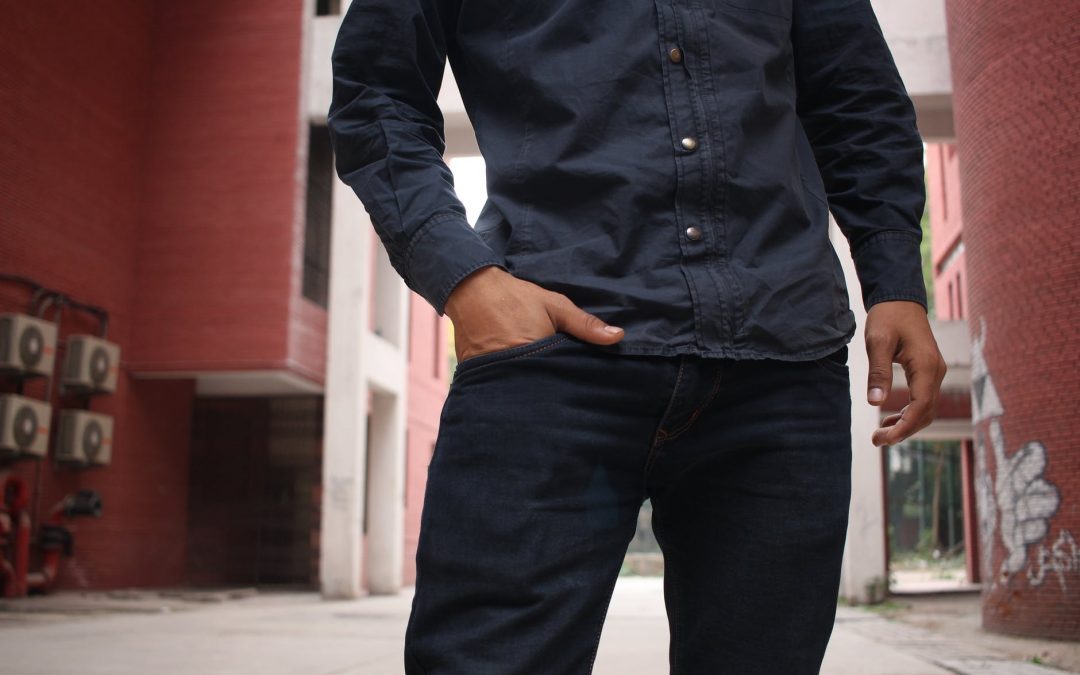Have you noticed your jeans fraying at the bottom? After owning and wearing the same pair of jeans for long enough, you may discover the bottom of the pant legs unraveling. Also known as “fraying,” it can happen to any pants, though it’s more common in jeans because of their unique construction. The good news is that you can often prevent it from happening. First, however, you may find out what your jeans are fraying at the bottom.
Boot Cut Jeans With the Wrong Footwear
Boot cut jeans are more likely to fray at the bottom than other styles of jeans, especially if you wear them with the wrong footwear. As you may know, boot cut jeans have a larger and wider around the bottom than other styles. They are called “boot cut” because the larger opening allows the bottom of the jeans to fit over the top of your boots. Other styles of jeans have a smaller and narrower opening around the bottom of the pant legs, so you can’t easily fit them over the top of boots. Boot cut jeans solve this problem by featuring a wider opening.
But if you wear boot cut jeans with the wrong footwear — specifically shoes, sandals, flip-flops or other non-boots — you won’t be able to take advantage of their unique design. On the contrary, wearing boot cut jeans with a different type of footwear than boots will likely result in the bottom of the pant legs dragging on the ground. Boot cut jeans have a wider opening around the bottom of the pant legs than other styles of jeans, so wearing them with the wrong footwear will allow the excess fabric to drag behind you. And if your jeans constantly drag on the ground when worn, the bottom will likely begin to fray.
They Are Too Long
If your jeans are too long, conventional wisdom should lead you to believe that they’ll drag on the ground when worn. When this occurs, the bottom of the pant legs will begin to fray. This won’t happen overnight. Rather, it can take months or even years of allowing oversized jeans to drag on the ground before they begin to fray. Regardless, you can prevent this from happening by choosing jeans in the right size.
When shopping for new jeans, consider ordering a custom-sized pair. You can’t always rely on standard sizes. Different stores use different measurements for their pant sizes. You might wear a 30 length in one brand of jeans and a 31 or 32 length in another brand. By ordering custom-sized jeans, however, you’ll have the freedom to choose
You Aren’t Wearing a Belt
Another possible reason your jeans are fraying is because you aren’t wearing a belt with them. Granted, you should be able to wear proper-fitting jeans without a belt. If your jeans are too large in the waist, though, they may fall from your hips when worn. As your jeans begin to drop, the bottom of the pant legs will be exposed to the ground, which will cause the denim fabric to fray.
By wearing a belt, your jeans will remain around your waist, meaning the bottom of the pant legs shouldn’t drag on the drag, nor should they fray. Alternatively, you can simply purchase jeans in the right size. If they fit around your waist, they shouldn’t fall from your hips when worn.
To purchase a pair of custom-fitted jeans, head over to our store. MakeYourOwnJeans is one of the largest vendors of custom-sized jeans. Unlike other stores, we allow you to specify your own measurements when ordering jeans. You tell us the length and width, and we’ll create a pair of high-quality jeans using your specified measurements. There’s no easier way to ensure your jeans fit perfectly.

Go for Selvedge Denim Jeans
Your jeans are less likely to fray if they are made of selvedge denim rather than traditional denim. What is selvedge denim exactly? Technically, it’s still the same type of material as standard denim, with both types featuring a cotton construction with warp-faced weaving. The difference is that selvedge denim has the bottom of selvedge denim jeans has been cut and sewn up a few inches.
If you examine the bottom of each pant leg on selvedge denim jeans, you’ll see a narrow band of fabric that’s been sewn up and into the jeans. With other styles of jeans, the bottom of the pant legs are left exposed. As a result, they are more susceptible to wear and tear, which can lead to fraying. Selvedge denim jeans solve this problem by featuring a narrow band of fabric that’s been cut and sew into the pant legs.
Use the Gentle Cycle When Drying
You can safely dry your jeans in a clothes dryer — you don’t have to take them to the dry cleaners or hang them on a line to dry. But if you’re worried about the bottom of your jeans fraying, you should consider using the gentle cycle on your clothes dryer. The gentle cycle is, not surprisingly, gentler than other cycles, so it shouldn’t cause or contribute to your jeans fraying at the bottom.
Choose High-Quality Jeans
Perhaps the single most important thing you can do to prevent your jeans from fraying at the bottom is to choose high-quality jeans. Some manufacturers use shoddy craftsmanship and low-quality denim to make their jeans. While you may save some money by purchasing a pair of low-quality jeans, they are more likely to fray than high-quality jeans.
It’s frustrating when you discover the bottom of your jeans fraying. Maybe they are fraying because you wear them with the wrong shoes, or perhaps they are fraying because they are too bit in the legs or waist. Regardless, you can protect your jeans from fraying by following the tips outlined in this blog post. With your jeans protected from fraying, you’ll get more use and enjoyment out of this classic garment.











